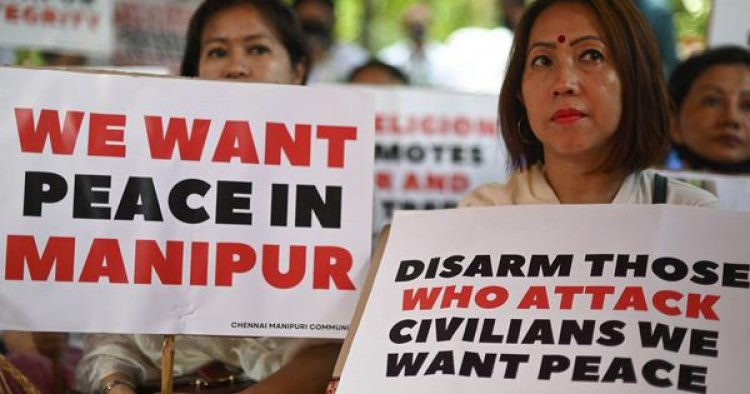Manipur: No End to Ethnic Conflict
Asia News Agency

Unrest and violence in the eight months old ethnic conflict in Manipur continues unabated. Last week, a mob targeted the 3rd Indian Reserve Battalion in Khangabok, Thoubal; Thoubal Police Headquarters was also attacked. In the border town of Moreh, two security personnel were killed. The state has requested the Home Ministry for ‘air assets’ in Imphal.
Blaming the state government that is yet to step up to its challenge, The Indian Express writes “the attacks on security personnel are disturbing on multiple counts. After the initial inertia, the state has seen a larger deployment of security forces, including the Army and paramilitary forces, to bring the situation under control. Yet, accusations of partisanship are rife on the ground, posing hurdles in their way……” Violence against the security forces “also highlights that force alone cannot tame a situation that requires sensitivity and compassion in equal measure.”
Instability in Myanmar
The instability in Myanmar, where Arakan insurgents claim to have taken control of Paletwa town in Chin state, that lies close to Myanmar’s border with India and Bangladesh, “is a troubling development, compounded by the fact that of the estimated 4,500-odd arms looted from state police armouries in Manipur in the early days of the ethnic clash, only about 30 per cent have been recovered so far. This means that unaccounted-for arms remain in circulation in a state where borders and buffer zones have deepened along ethnic lines between the hill and valley people and where each feels distrust for the other and for those meant to govern and protect them.”
An exhausted state machinery: situation is putting the Indian state to a stern test
The unending season of anger and grief in the state, “shows both a lack of will and an obduracy in failing to acknowledge that far more needs to be done.”
Writing from a security perspective, Jaideep Saikia (Security & Terrorism Analyst) states “an exhausted state machinery, devoid of novel tactics, is merely attempting to stave off terror strikes and is falling prey to newer, belligerent manoeuvres. The militants, having sophisticated weaponry which they have been allowed to retain, are waging a new form of urban warfare…..Resistant to various counter-insurgency interventions, the situation in Manipur is putting the Indian state to a stern test….” It seemed obvious, “that peace would not return to the ‘Land of Emeralds’ (Manipur) unless there was out-of-the-box thinking to deal with the divisions between the warring communities.”
Insurgents from across Myanmar has added to the crisis
The entry of insurgents from across Myanmar, writes Saikia “has added to the crisis. Though the government has been able to bring over ground a faction of the United National Liberation Front (UNLF-Pambei), the fact is that the Group of Five continues to billet itself in three clusters of Sagaing division.
“Apart from members of the Koireng faction of the UNLF, the People’s Liberation Army (Manipur), People’s Revolutionary Party of Kangleipak (two factions), Kanglei Yawol Kanna Lup and the Kangleipak Communist Party are residents of these clusters. These groups, aided and abetted by Chinese masters, are entering Manipur from Myanmar. It has been learnt that even the National Socialist Council of Nagaland (Isak-Muivah) or NSCN-IM, which is in dialogue with the Indian government, is helping them enter India via the Somra tracts of Sagaing division…..
“Manipur is being torn apart by warring insurgents. Groups such as Arambai Tenggol and Meetei Lipun have sworn to restore Meitei supremacy over what was once a Meitei-ruled princely state. Better sense can prevail only if the state shows firm resolve.”
















